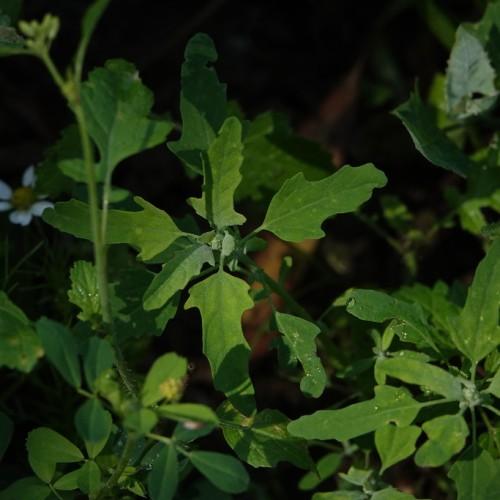
Figleaf Goosefoot
Chenopodium ficifolium
Watering:
Frequent
Hardiness Zone:
Sun:
full sun,part shade
Fruits:
Fruits Ready In Fall
Leaf:
Yes
Growth Rate:
Low
Drought Tolerant:
Yes
Salt Tolerant:
Yes
Care Level:
Medium
watering
Zsack's Goosefoot plants should be watered deeply once per week. Make sure to soak the soil thoroughly and water until it begins to drip out of the drainage holes in the bottom of the pot. Allow the soil to mostly dry out between waterings. During periods of drought, an extra watering may be needed. Overwatering can lead to root rot, so use caution and ensure soil is not constantly too wet. Avoid overhead irrigation.
sunlight
Zsack's Goosefoot thrives in full sun, typically receiving 6 to 8 hours of direct sunlight a day. It grows best in areas with sandy soil and requires occasional watering, with a preference for warm, humid climates. It is recommended to water sparingly in the summer months and in the colder months when the plant becomes dormant or dries out. Sunlight should typically be applied before midday and for the late afternoon period, while morning light is less intense and ideally should be limited. Zsack's Goosefoot does not tolerate shade and should be exposed to full sunlight for optimal growth and health.
pruning
Zsack's Goosefoot benefits from regular pruning to keep it from becoming overgrown and unruly. Pruning should be done when the plant is actively growing in late spring or early summer. Pruning should begin shortly after new growth has started to appear in late spring. Remove up to 1-third of new shoots and/or flowers or seed heads. For pruning, use sharp shears or scissors to cut individual stems at the base. Keep the pruning cuts crisp and even. If necessary, modest shaping can also be done to keep the plant tidy. After pruning, the plant can be fertilized, but do not apply too much fertilizer as this could cause the plant to become leggy.
